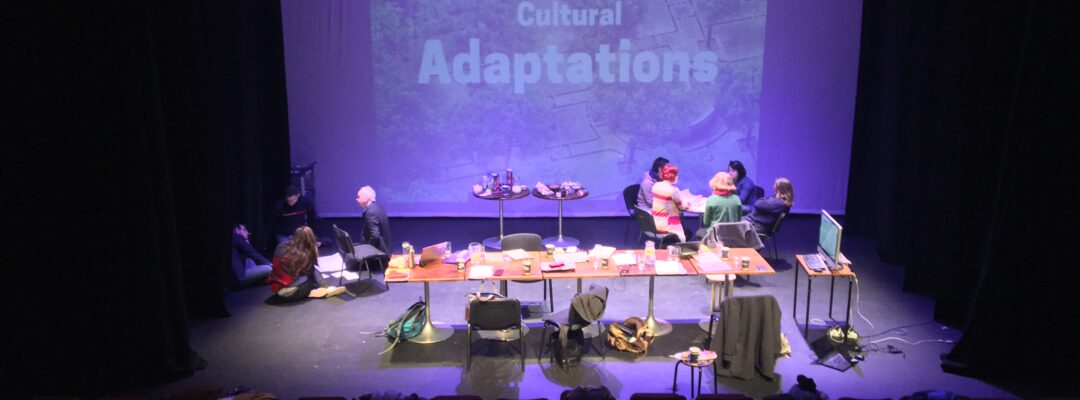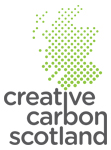In March 2020, we were due to undertake the third of our transnational workshops, this time in Dublin, Ireland. This blog from our Belgian partners, Greentrack Ghent, explains how the COVID-19 pandemic changed our plans, current progress in our embedded artist projects, and what we’ve learnt so far.
Our next transnational meeting was planned to take place in Dublin from 12 to 14 March. The programme looked promising. The Irish had so much to show us that an extra day was accommodated within the budget – and for those who wanted to soak up some Irish nature, an extra day of hiking in the Wicklow Mountains was added.
It was clear that our Irish partners were going to be very creative with the programme, combining a mixture of art performances, workshops, debates, and inspiration from their folklore tradition and their fiery ways of campaigning. We were going to discover what was so characteristic of the Irish approach and how they could use that individuality for climate adaptation.
axis Ballymun, a major arts venue and community resource centre was the location for most of the programme. The Ballymun area is a fairly isolated community to the north of Dublin’s city centre, where social housing blocks were built in the 1960s. Ballymun subsequently grew into a community with a lot of poverty, unemployment, drug use, and in 1990 axis was founded to play a connecting, imaginative and educational role as a cultural organisation and venue.
COVID-19
As participants in a climate change adaptation project, we all want to try to travel as sustainably as possible. Sustainable travel means that you spend a longer time on the road and as a result people sometimes choose to spend more days at their destination. A longer, often more expensive crossing is not always in proportion to the short stay you need to attend a particular conference; give that certain lecture; hold that one meeting. And so we also chose to travel earlier and to spend a few days in Ireland before the meeting started.
Our departure coincided with the growing concern about the coronavirus crisis in Italy, and once in Ireland it soon became clear that other countries, including Ireland, were starting to take precautions. Piece by piece, our programme fell apart.
Our Swedish partners had opted not to travel as a precaution and, in retrospect, their assessment of the crisis turned out to be very realistic. The day our meeting was due to start, the Irish government announced strict COVID-19 measures (including the closure of schools and all public building), and Belgium followed in the evening.
With the axis doors closed to the public, we decided to make full use of the long afternoon and evening for an internal partner meeting, to share our learning about the ongoing project and our future plans. The next day, a few Scottish partners left before dawn, and after a morning meeting, the rest started re-booking boat and train tickets. A day later we were all back home.
Nevertheless, that one afternoon and evening meeting proved to be very fruitful. We worked in a strange, confusing atmosphere and everyone’s attention darted back and forth between the ongoing conversation, thoughts about how we would get home and how the situation would be at home. There was a constant stream of news reports about the virus, infections, deaths and at the back of our minds, the realisation that if a threat is acute enough, we can all suddenly make radical choices. Strangely enough, we found a good focus within this whirlwind of thoughts to formulate clear conclusions and new ideas for the project.
We were also able to salvage parts of the programme we had planned. There were brief talks about how axis works, about the climate change efforts and challenges for Codema and Dublin and an update on the local embedded artist project.
Maeve Stone: Intergenerational activism
Irish artist Maeve Stone has delved into climate activism for her embedded artist project, exploring the rich detail that lies in the exchange between different generations. By connecting the wisdom, experience and expertise of the older generation with the activism of the younger generation, you not only enrich the group of climate activists, but you also transcend the western, limited focus on and appreciation of a financially ‘rich’ generation, and instead turn towards building a more resilient community. Maeve also commented that, in her research, the majority of climate activists she has spoken to so far (70 to 80 people) were women, highlighting a potential gender divide in generational approaches to climate action.
Our embedded artist project in Ireland is still in a relatively early stage, yet Maeve has already collected a lot of material, based on her own experiences and observations. The artist and the organisation in which she is embedded – Codema – are still in an initial phase of getting acquainted and building mutual trust.
Embedded artist project: from an open mind to defined purpose
There is no single formula to embed an artist in a non-cultural organisation, and no blueprint for addressing the social challenge of climate change adaptation.
The expectations of the organisation where the artist is embedded, the artist’s own desires to make a valuable contribution, the focus on extended ‘thinking’ and ‘contributing’ (instead of on an artistic result), and the background of the artist themselves all combine to create an ambitious cocktail of challenge.
You always get a different approach depending on where attention is concentrated.
There are many differences between the four embedded artist projects which are part of Cultural Adaptations, but parallel lines also emerge.
From the onset we all thought it was important to keep the process as open as possible: to divert attention away from an end result and certainly from an artistic product, to give the artist space to observe, to take a closer look and then to zoom out again. The freedom to observe and research is very important. But this part of the process cannot be endless, or those participating could get frustrated through a lack of tangible outputs. So it is also important to become more concrete with aims and actions at some point. Keeping an open view should not become an end in itself, rather it is an instrument to step out of well-known habits and patterns and revisit them in new and different ways.
We have noticed that a similar process is developing in the different projects. After a long, filtering phase of building trust, observing and keeping the process open to development and change, there is a phase of experimentation and redefining – again and again – that can crystallise into a more concrete outcome. The initial phase acts as a foundation that can give the artist a lot of freedom, and the opportunity to pivot to more fruitful areas of enquiry as they arise.
What’s next?
Due to the COVID-19 measures, our three remaining embedded artists projects are delayed (the fourth – in Sweden – was already completed last year). Our conclusions are still provisional and we hope to continue learning.
Everything that we collect along the way – from experiences to tips – we will bundle in a toolkit that will be made available at the end of the project to anyone who wants to work with embedded artists or who wants to work as an embedded artist.
Find out more about the Dublin context Recorded in Dublin: in conversation with Ben Twist and John O’Brien Cultural Adaptations conference 2021













